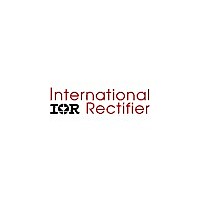IR3521MTRPBF International Rectifier, IR3521MTRPBF Datasheet - Page 34

IR3521MTRPBF
Manufacturer Part Number
IR3521MTRPBF
Description
IC CTRL XPHASE3 SVID 32-MLPQ
Manufacturer
International Rectifier
Series
XPhase3™r
Datasheet
1.IR3521MTRPBF.pdf
(45 pages)
Specifications of IR3521MTRPBF
Applications
Processor
Current - Supply
10mA
Voltage - Supply
4.75 V ~ 7.5 V
Operating Temperature
0°C ~ 100°C
Mounting Type
Surface Mount
Package / Case
*
Package
32-Lead MLPQ
Circuit
X-Phase Control IC
Switch Freq (khz)
250kHz to 1.5MHz
Pbf
PbF Option Available
Lead Free Status / RoHS Status
Lead free / RoHS Compliant
VOLTAGE LOOP COMPENSATION
The adaptive voltage positioning (AVP) is usually adopted in the computer applications to improve the transient
response and reduce the power loss at heavy load. Like current mode control, the adaptive voltage positioning
loop introduces extra zero to the voltage loop and splits the double poles of the power stage, which make the
voltage loop compensation much easier.
Adaptive voltage positioning lowers the converter voltage by R
the converter.
The selection of compensation types depends on the output capacitors used in the converter. For the applications
using Electrolytic, Polymer or AL-Polymer capacitors and running at lower frequency, type II compensation shown
in Figure 21(a) is usually enough. While for the applications using only ceramic capacitors and running at higher
frequency, type III compensation shown in Figure 21(b) is preferred.
For applications where AVP is not required, the compensation is the same as for the regular voltage mode
control. For converter using Polymer, AL-Polymer, and ceramic capacitors, which have much higher ESR zero
frequency, type III compensation is required as shown in Figure 18(b) with R
Type II Compensation for AVP Applications
Determine the compensation at no load, the worst case condition. Choose the crossover frequency fc between
1/10 and 1/5 of the switching frequency per phase. Assume the time constant of the resistor and capacitor across
the output inductors matches that of the inductor, and determine R
C
respectively.
C
A ceramic capacitor between 10pF and 220pF is usually enough.
E
CP1
are the equivalent inductance of output inductors and the equivalent capacitance of output capacitors
is optional and may be needed in some applications to reduce the jitter caused by the high frequency noise.
VO+
VDRP
RFB
RDRP
(a) Type II compensation
C
R
CP
CP
2 (
10
V
I
VDAC
*
FB
FB
R
RCP
f
1
L
C
CP
Figure 21 Voltage loop compensation network
E
)
2
2 (
+
-
CCP1
C
L
E
*
E
EAOUT
f
C
C
*
E
CCP
C
*
R
R
FB
C
)
2
EAOUT
5
Page 34
VO+
VDRP
RFB1
O
*I
(b) Type III compensation
O,
CP
where R
RFB
RDRP
CFB
CDRP
and C
DRP
O
CP
VDAC
is the required output impedance of
FB
from (20) and (21), where L
and C
RCP
+
-
CCP1
DRP
EAOUT
removed.
CCP
(20)
(21)
EAOUT
IR3521
V3.03
E
and











